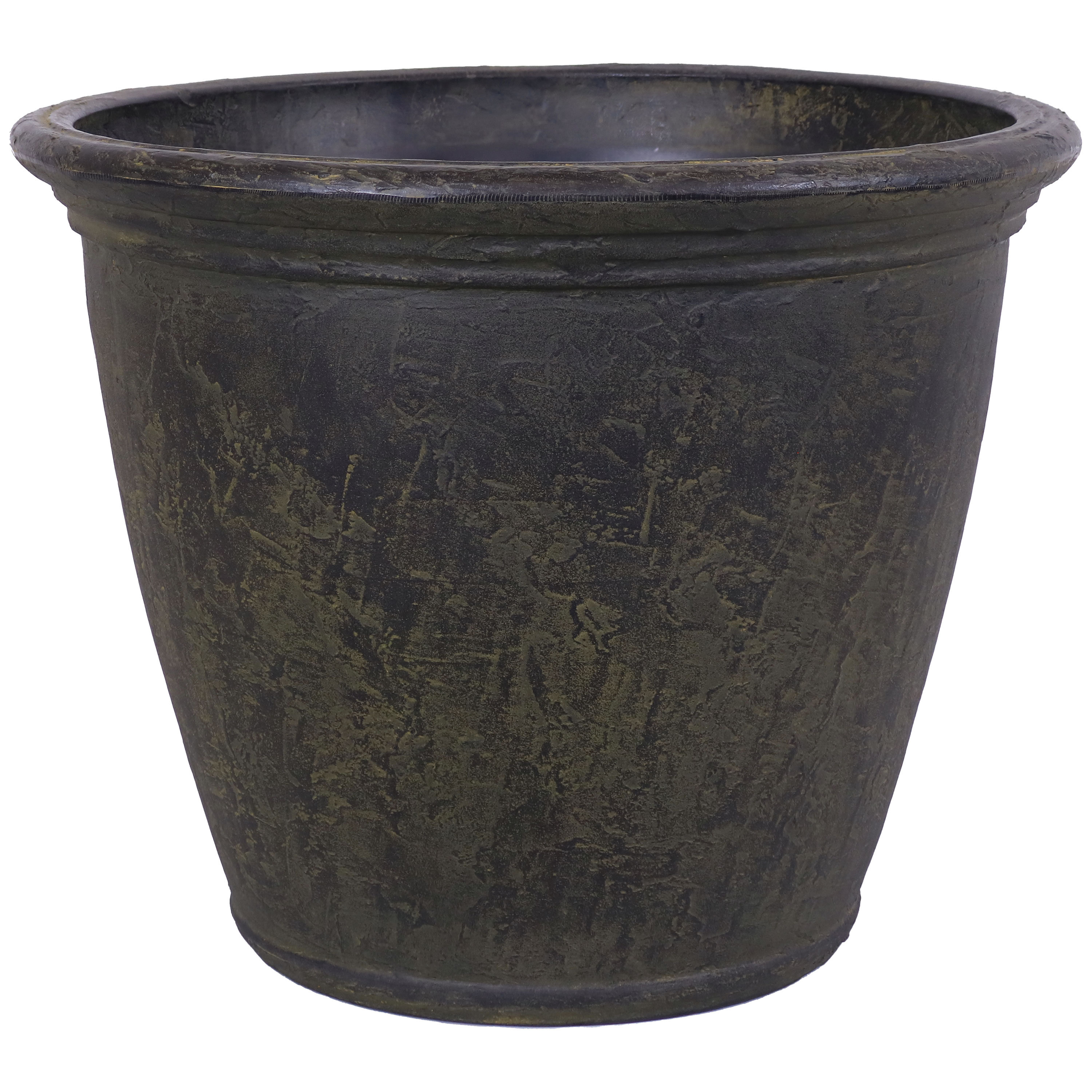5 perennials that thrive on neglect – expert recommendations for low-maintenance plants that are incredibly easy to grow
These fuss-free perennials are perfect for adding brilliant color to any yard
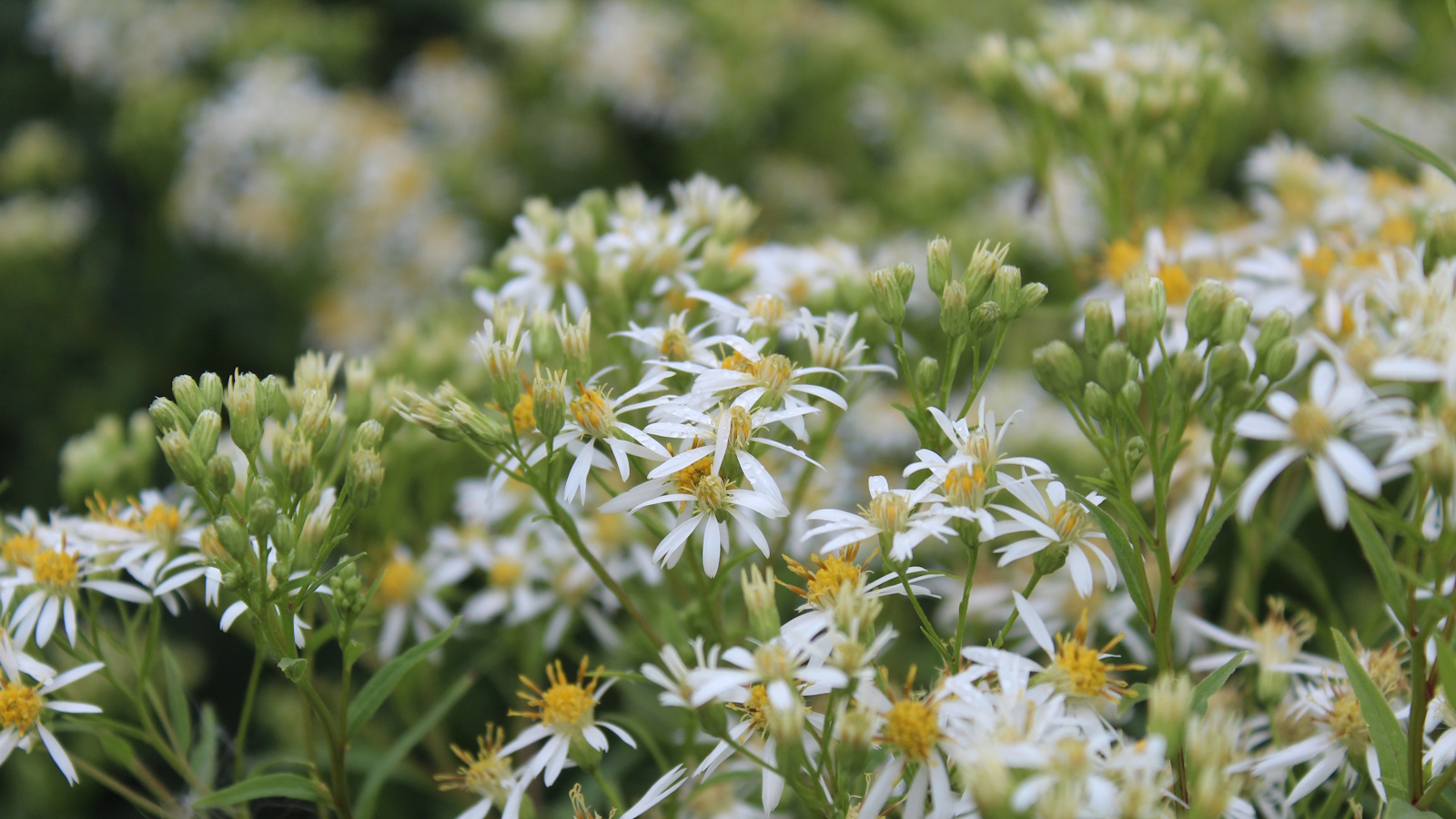

As a professional gardener, I have gained experience working in many different gardens in different parts of the world. From months spent deadheading and pruning in fussy and formal English rose gardens, to a more laid-back spell in a relaxed, Mediterranean gravel garden. I have moved around a lot in my career, yet through these unique experiences, I've come to appreciate species that don’t mind being left alone and ignored.
For time-strapped gardeners or those who prefer a more hands-off approach, there are a handful of perennials that thrive on neglect, adding impact without much of a commitment. These species, I think, deserve more attention, especially from time-poor gardeners or those just getting started growing their own flowers.
So, if you’re after some of the easiest perennials that can handle a bit of neglect (as well as anything else thrown at them), then this list is for you. Below are my top picks for five perennials that thrive on neglect, along with a few lessons from my experiences cultivating them in gardens across the UK and Italy.
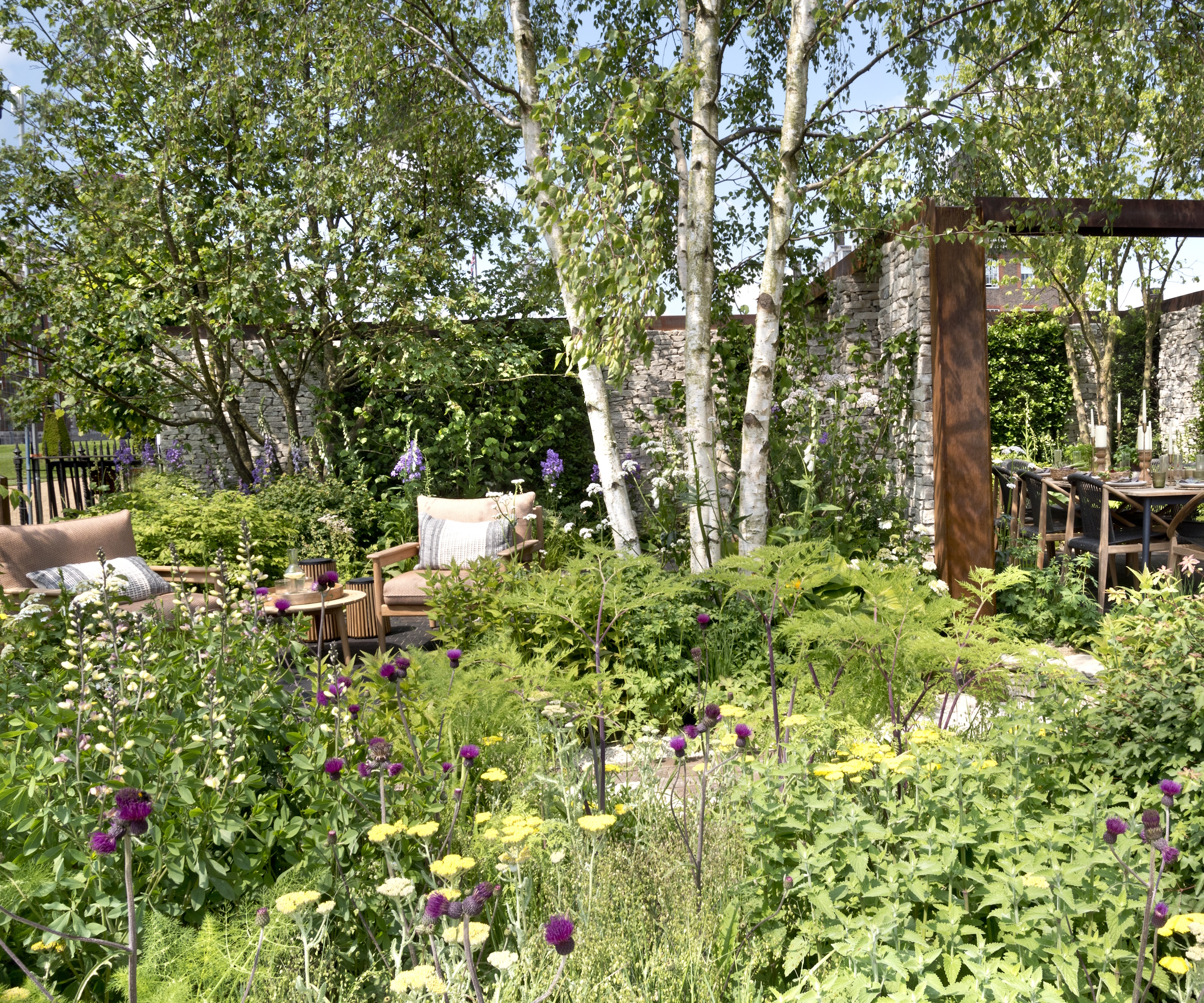
5 perennials that thrive on neglect
It is important to remember that low-maintenance doesn’t mean no maintenance. Many perennials that thrive on neglect can become unruly without occasional care.
Take Persicaria, for instance, a North American native I’ve used in several gardens and listed below. I adore its ability to creep, crawl and self-seed, but without a bit of TLC every few years, it tends to become a little too vigorous.
So, while the following five perennials do not demand much attention, the occasional thinning, pruning or deadheading can help to limit their spread.
1. Stone crop
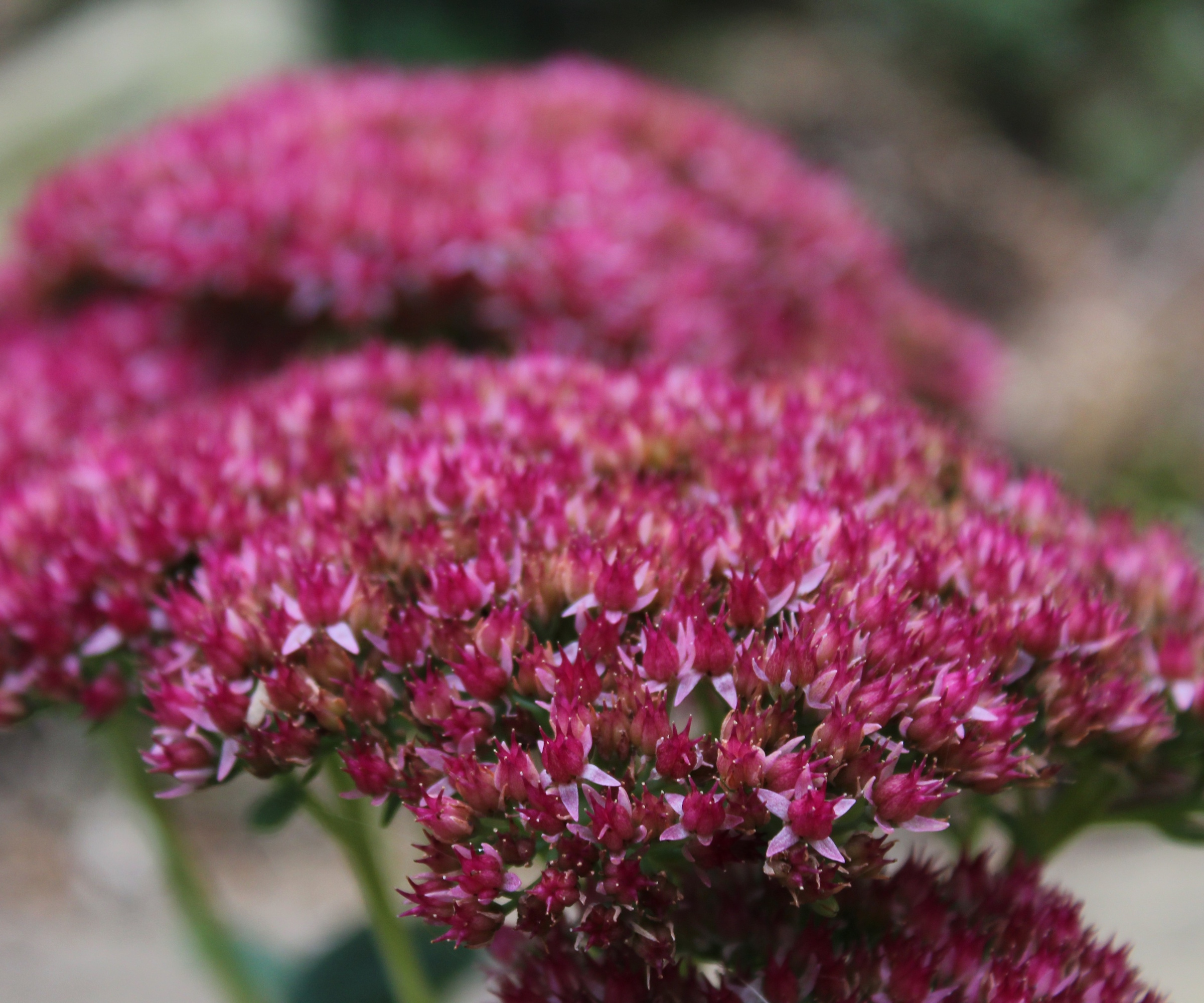
Stonecrops (sometimes referred to as sedums) are succulent perennials that I have grown on many occasions. With tall pink-red flower spikes that appear in spring or summer, stonecrops can bring height and color to sunny yards with limited care needed.
Design expertise in your inbox – from inspiring decorating ideas and beautiful celebrity homes to practical gardening advice and shopping round-ups.
In recent years, several upright sedum species have been recategorized, including the example photographed above, whose botanical name is now Hylotelephium 'Autumn Joy.'
I grew this stonecrop when working in London, and can testify to its low-maintenance nature. In fact, its fleshy leaves store water, making it exceptionally drought-tolerant during those hot July and August days.
Hardy down to zone 4, stonecrops do best in full sun, and would be well-suited to south-facing, free-draining yards. I would avoid planting stonecrop in soggy or waterlogged beds, as this could cause root rot.
In terms of when to cut back sedum for winter, you can give them a trim in early spring, which will encourage low, bushy growth during April and May. Beyond this, stonecrop is pretty easy to grow and is a useful go-to plant for time-short gardeners.
Live stone crop plants are available to order from Amazon.
2. Yarrow
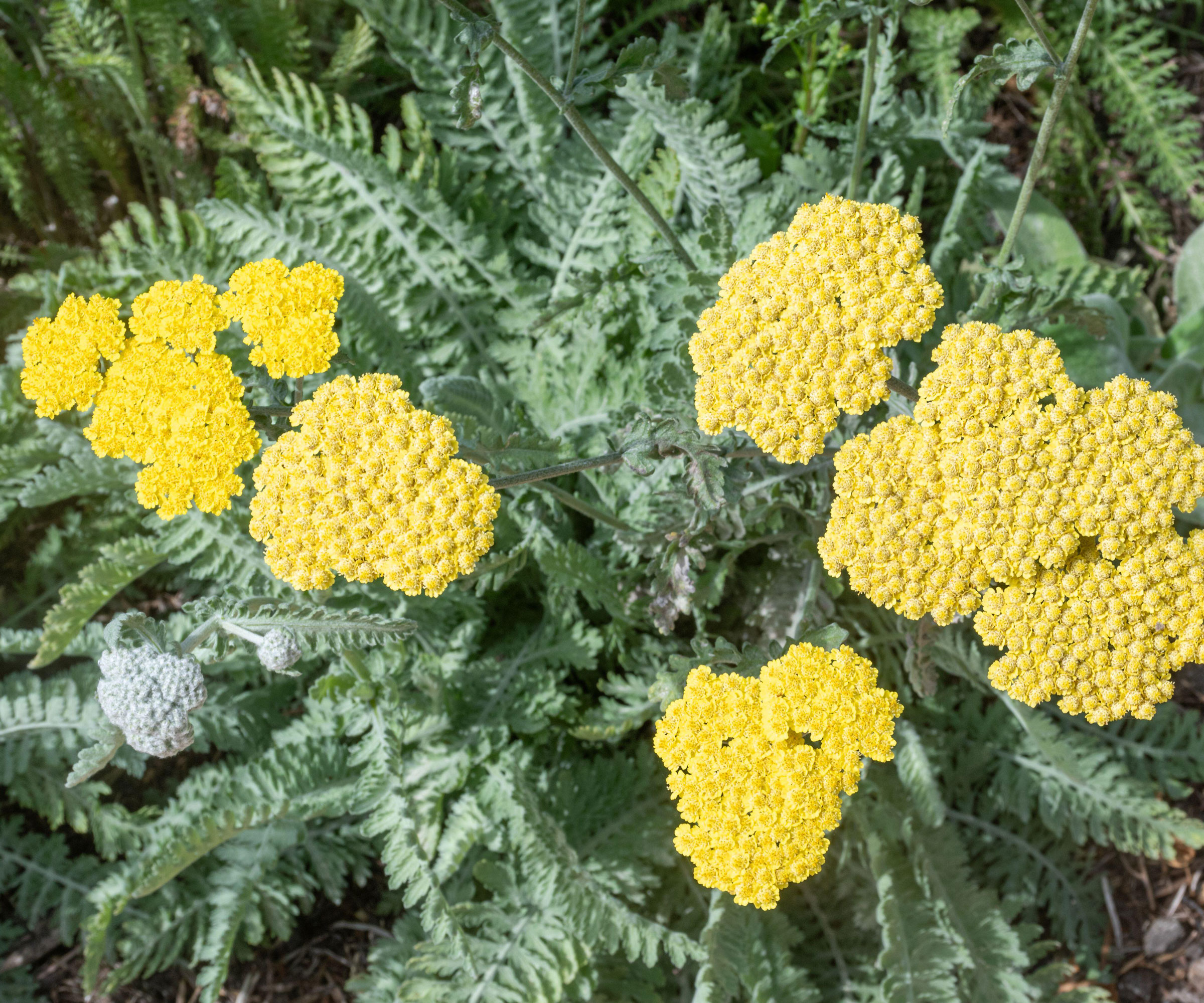
Growing best from zone 3 to zone 9, yarrow is an easy-to-grow frost-hardy perennial valued for its feathery foliage and flat flower clusters that can be found in shades of white, yellow, pink and red.
I have grown yarrow in both formal borders as well as part of naturalistic planting design in wild meadows, and have never had any difficulty with its upkeep.
In fact, yarrow tends to do best without any supplemental water or fertilizer. So long as it has a sunny position in the yard, it will grow just fine in sandy, loamy or even clay-based soils.
If you are keen to introduce plants for pollinators to your plot, I would absolutely recommend adding yarrow, which is known to attract bees and butterflies.
The only maintenance tip that I would offer is to deadhead yarrow in summer, which can encourage reblooming later in the season.
One of my favorite varieties that I have grown is the pale lemon-colored yarrow, Achillea 'Credo', which would pair well with white, yellow and purple blooms in garden borders. In Italy, this variety was a magnet for butterflies when in bloom.
For an unusual option, try this 'Strawberry Seduction' yarrow, with live plants available from Nature Hills. This red flowering perennial will work well in maximalist, colorful hot borders.
3. Knotweeds
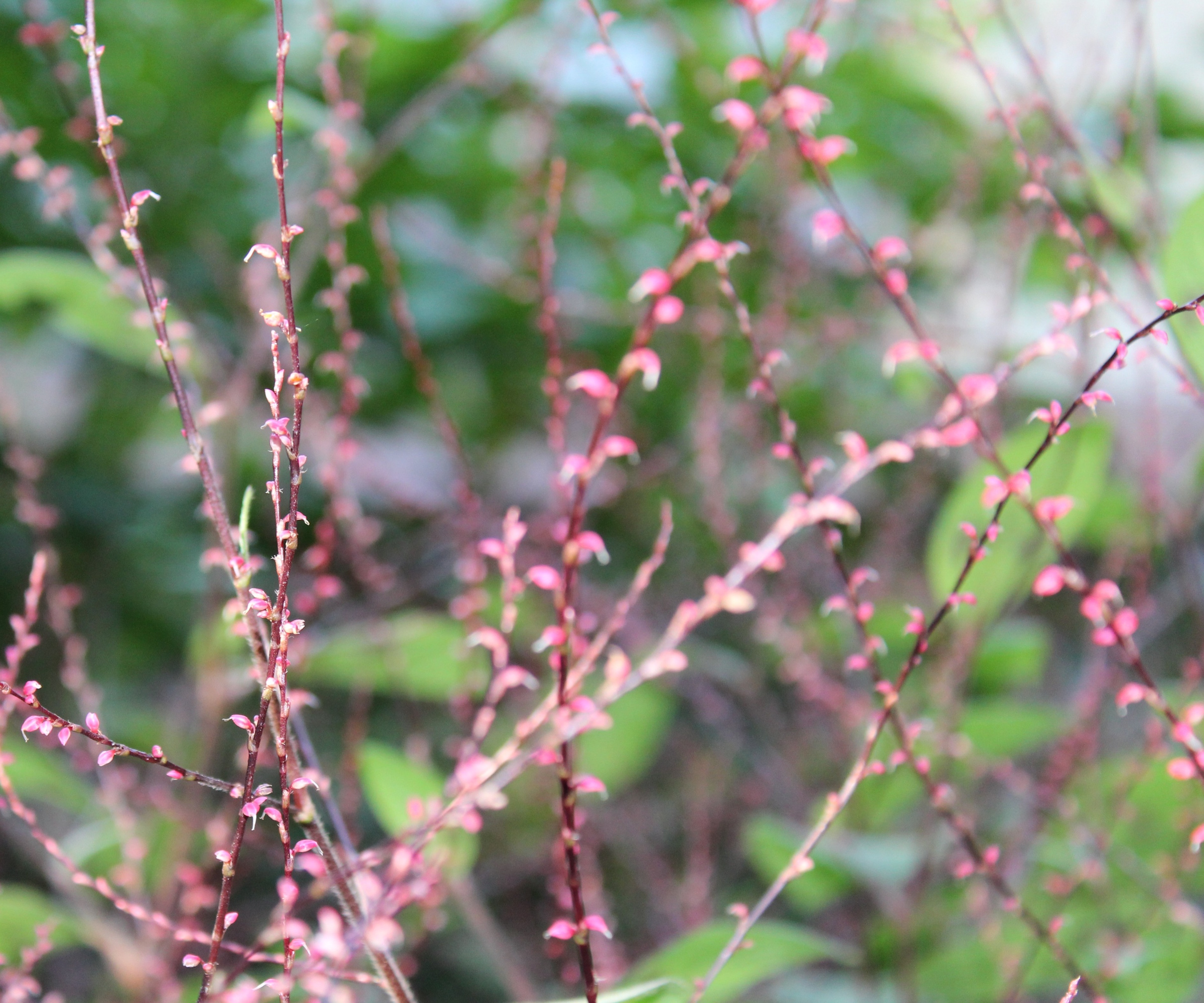
I have grown Persicaria, or knotweed, in many different gardens. In my experience, they are some of the longest-flowering perennials, often blooming from mid-spring right through until the first frost.
Live persicaria plants can be ordered online from Walmart.
While it will vary from species to species, most knotweeds are hardy somewhere between zone 4 and zone 8, and can be grown in both sun and shade.
Most will thrive in almost any soil, and often, gardeners refer to them as ditch plants, hinting at their hardy, robust nature
When working at the Garden Museum in Central London, found just across the River Thames from the Houses of Parliament, we grew a North American knotweed, Persicaria virginiana.
This native plant never failed to attract attention from visitors to the Museum, notably for its unusually marked leaves (lime green with black dashes), as well as its pink flower spikes that would emerge from July onwards.
As you can see from the image above, which I took when working there, the unusual flower spikes are both airy and delicate, and look good whether grown in borders or pots.
And, the best part? Persicaria virginiana is undeniably one of the best perennials that thrive on neglect.
Be warned, however, that many Persicaria species are prolific self-seeders, and outside of their native range, can sometimes be considered invasive plants due to their spreading nature. I have never had any issue with this, but they do require thinning and deadheading to prevent this.
4. Aster
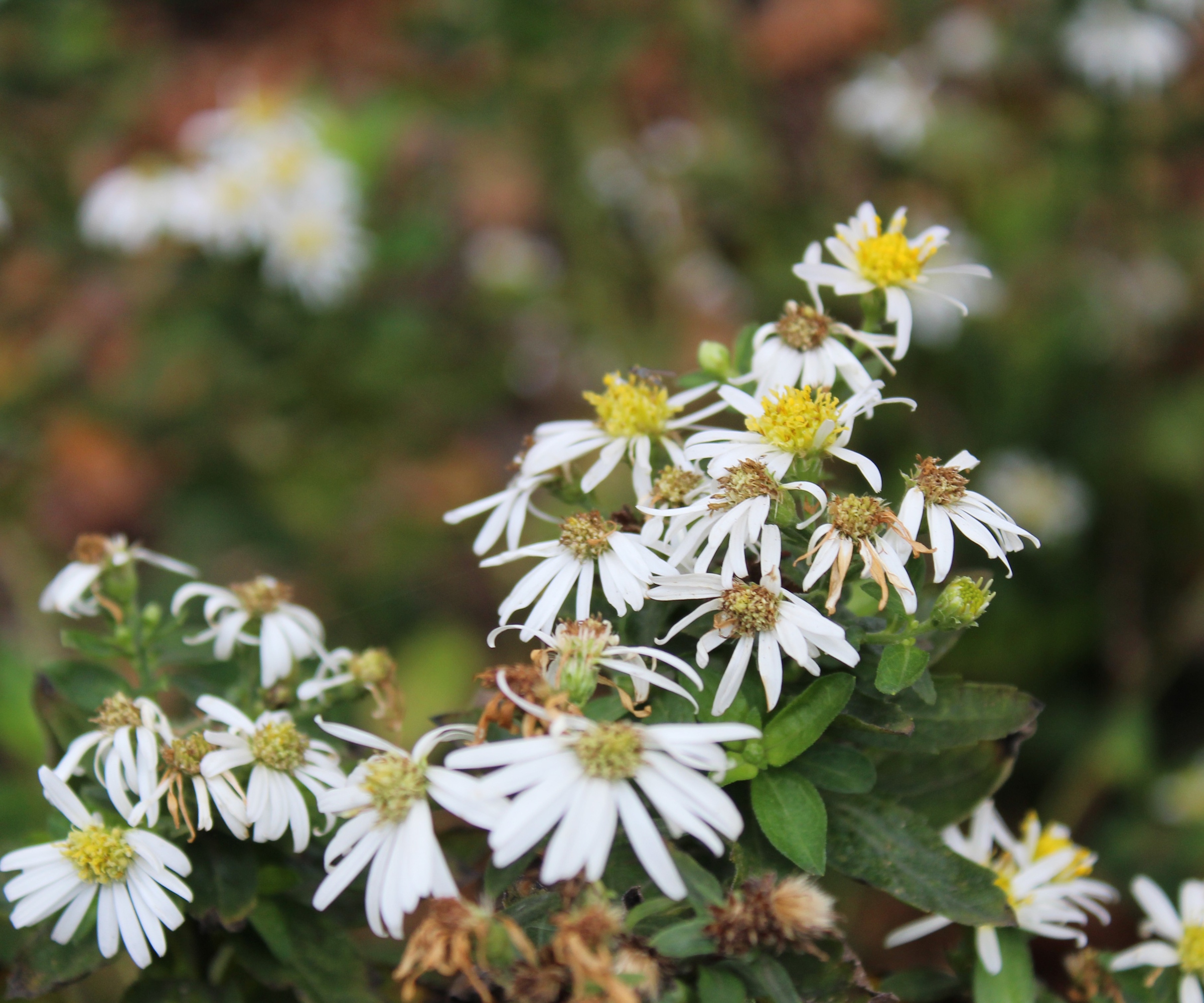
If you are looking for fall-blooming native plants that are low-maintenance but high-impact, then learning how to grow and care for asters is a good idea.
It varies between different aster varieties, but many are cold hardy down to zone 3, requiring little care even in chilly northern regions.
Most asters do best in part-shade, with a few hours of sunshine each day, although some can tolerate full-shade, too. For example, the white wood aster, Eurybia divaricata, is one species that can handle darker settings.
As you can see in the image above, this species has attractive white flowers that can grow to a height of four feet or more. I grew these before in a dark woodland bed, and these daisy flowers helped to add color to a challenging area under a large tree.
For a purple-flowering option, try the 'Grape Crush' New England aster, with live plants available from Nature Hills. These native plants are a great option if you enjoy colorful, vibrant pots and borders.
5. Sisyrinchium
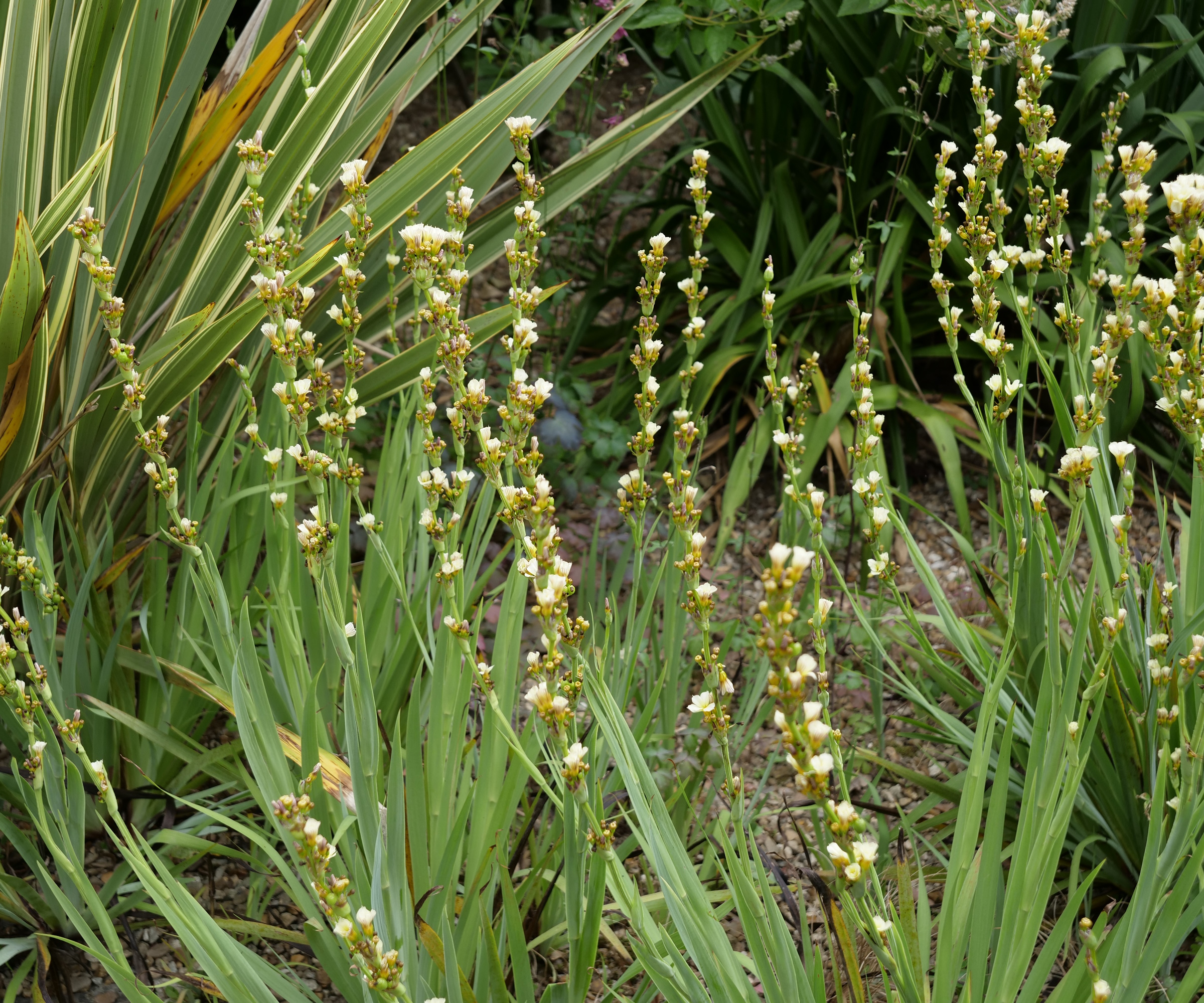
Sisyrinchium striatum, commonly known as the yellow Mexican satin flower, is another self-seeding flower that thrives with little input needed.
I have grown this species from seed and planted it in different gardens, both where I have worked as well as in my parents' garden in South Wales. And, with attractive spiked foliage that looks similar to that of an iris, this tall perennial is perfect for adding height to cottage garden borders.
These low-maintenance plants grow best in zone 5 plus, with a preference for a sunny spot and free-draining soil. However, I have seen this perennial growing through compacted gravel in a parking lot. So, to put it lightly, it is not a fussy plant.
Delicate yellow flowers will bloom in late spring and should self-seed freely across your borders. Regular deadheading will help to limit its spread and can help to encourage a few late-season flower spikes, too.
There are other species of Sisyrinchium to try, such as the blue-flowering Sisyrinchium angustifolium, available to order online at Walmart, which would work well in cool-colored yards.
FAQs
Do you need to fertilize perennials?
Many of these low-maintenance perennials do not need fertilizing, and can usually access what they need from the soil. The only instance I would recommend applying fertilizer is if you are growing any of these perennials in pots, or if they are showing signs of struggle or poor flowering. Feeding perennials in containers is important during spring and summer, and using a bloom booster feed, such as this organic feed by Dr Earth, available from Walmart, can help to maximize flowering.
Some of the toughest perennials that thrive on neglect are native to North America. For an unusual option, one of my favorites from North America is Sanguisorba canadensis, also known as white burnet.
Hardy down to zone 4, this clump-forming perennial can be grown in a range of soil and light conditions, and will produce masses of lofty blooms that move in the breeze.
For more low-effort and high-impact native plant inspiration, see our guide on the best shrubs that thrive on neglect, and populate your borders with even more easy-to-grow species this year.
Shop garden accessories

Thomas is a Content Editor within the Gardens Team at Homes and Gardens. He has worked as a professional gardener for both public spaces and private estates, specializing in productive gardening, growing food and flowers. Trained in Horticulture at the Garden Museum, he has written on gardening and garden history for various publications, including The English Garden, Gardens Illustrated, Hortus, The London Gardener and Bloom. He has co-authored a Lonely Planet travel book, The Tree Atlas, due out in 2024.
You must confirm your public display name before commenting
Please logout and then login again, you will then be prompted to enter your display name.

